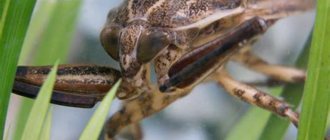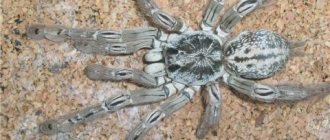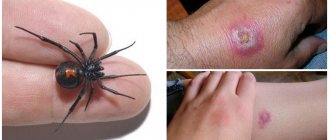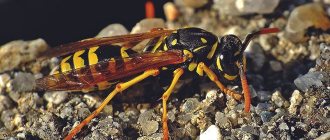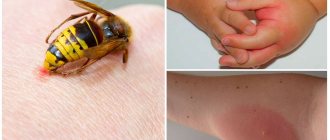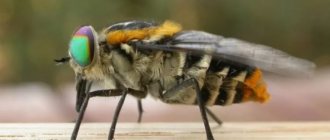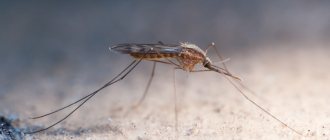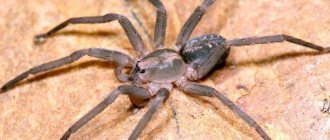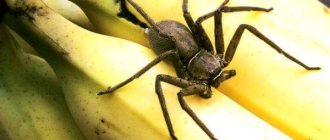General
Tarantulas are a group of large, hairy, venomous spiders belonging to the family Theraphosidae. About 1000 species have been discovered. Many other members of the same suborder (Mygalomorphae) are commonly called "false tarantulas".
Some of the most common species have become popular exotic pets. Representatives of the New World, which are kept as pets, have shrinking hairs that cause skin irritation and harm the eyes.
Like all arthropods, the tarantula is an invertebrate. Relies on an exoskeleton for muscular support. The body consists of two main parts:
- Prosoma (cephalothorax).
- Opisthosoma (abdominal cavity).
The prosoma and opisthosoma are connected by a stalk or pregenital somite. This waist-like connecting element is actually part of the prosoma and gives the opisthosoma a wide range of motion.
Black tarantula as a pet
Tarantulas are one of the most popular pets, despite their poisonous nature. Many people get spiders and keep them in certain conditions, using special closed aquariums.
For spiders, a special type of food is used, which not only saturates the body with minerals, but also prevents various diseases.
Before getting arthropods, it is necessary to study the features of their maintenance and prepare a place of residence. Also, the spider must be purchased in specialized places to prevent the risk of purchasing an infected or diseased spider.
Appearance
The largest and heaviest spiders are found among tarantulas. They have a body length of up to 90 mm (3.5 in) and a leg span of up to 250 mm (9.8 in).
Sizes range from small as a fingernail to large as a dinner plate when the legs are fully extended. Depending on the species, body length ranges from 2.5 to 10 cm (1 – 4 in), with a leg span of 8–30 centimeters (3–12 in).
Leg span is determined by measuring from the tip of the rear leg to the tip of the front leg on the opposite side. Some of the largest weigh more than 85 g (3 oz).
The largest of these, Goliath Birdeater (Theraphosa blondi) from Venezuela, Brazil, weighs 170 g (6.0 oz). Has a leg span of up to 30 cm (12 inches).
Males are longer, females have a larger girth. The fang size of this tarantula reaches a maximum of 3.8 cm (1.5 in).
Theraphosa apophysis (pink-legged goliath) is described 187 years after Goliath, so its characteristics are not as well confirmed. Theraphosa blondi is considered to be the heaviest tarantula, T. apophysis has the largest leg span.
Two other species, Lasiodora parahybana (Birdeater), Lasiodora klugi, rival the previous two goliaths in size.
Most species of North American tarantulas are brown. Elsewhere found cobalt blue (Cyriopagopus lividus), black with white stripes (Aphonopelma seemanni), yellow leg markings (Eupalaestrus campestratus), blue legs with a bright orange belly and green prosoma (Chromatopelma cyaneopubescens).
Their natural habitat:
- savannah;
- grasslands such as pampas;
- rainforests;
- deserts;
- shrubs;
- mountains;
- alpine forests.
They burrow and live in the ground. Tarantulas are popular as pets, and some species are easy to keep in captivity.
A few facts about tarantulas
In ancient times, residents of Italy considered tarantula bites fatal. There was only one way to avoid death - dancing. The bitten residents began to dance, waving their arms and legs until exhaustion. This is how the famous dance “Tarantella” appeared.
Many people keep these arthropods as pets. Tarantulas do not require special care and live for quite a long time. A female spider can live next to a person for about 30 years.
In nature, tarantulas are very attached to their home. When a spider goes hunting, a web is attached from its burrow to the body of the arthropod. If the web accidentally breaks, the insect may become lost in orientation and then not find its lair. If this happens, the spider digs a new home for itself.
Tarantulas are capable of regenerating their limbs. If a spider loses a leg in a fight with another individual or while hunting for prey, a new one grows in place of the lost limb after some time. The regrown tarantula's foot is smaller in size compared to the rest of the legs.
Conclusion
A tarantula bite is quite unpleasant, but not fatal to humans. In an adult healthy person, the bite goes away after 4 days, and after that there are no symptoms of the spider attack. It is more difficult for those who suffer from allergic reactions. For them, an arthropod attack can result in severe health complications. However, you need to be extremely careful and, if possible, avoid any encounters with the spider. Tarantulas can bite humans, watch the video.
The tarantula is definitely not the most pleasant representative of the animal kingdom, given that in addition to its peculiar appearance, it is also a poisonous insect. The name of this spider, “tarantula,” came to us from Renaissance Italy. In those distant times, there were many of these spiders in the cities of Italy and, as a result, many people were bitten by them. Because of the bite, the unfortunate people suffered from convulsive seizures; of course, these conditions could have been caused by other reasons, but then they were associated specifically with spider bites. And the largest number of people bitten was in the Italian city of Taranto, which gave the name to this spider - tarantula.
An interesting fact: to cure the consequences of a bite from this spider, medieval doctors prescribed dancing until you drop a special dance - the tarantella, which, by its name and history of origin, is also directly connected with the city of Taranto, and with the hero of our today's publication - the tarantula spider.
Etymology
The arthropod originally called the tarantula is Lycosa tarantula, a species of wolf spider native to Mediterranean Europe. The name comes from the southern Italian city of Taranto.
The term "tarantula" was subsequently applied to almost all large, unfamiliar species of ground spiders. For example, to mygalomorphs, especially Theraphosidae. Compared to tarantulas, wolf spiders are not particularly large or hairy.
When physicians in North and South America treated bites, the spiders were called “tarantulas,” which led to the term being used for all tropical species.
The name is incorrectly applied to other large-bodied spiderlings, including web or atypical tarantulas, funnel tarantulas (Dipluridae, Hexathelidae), and "dwarf tarantulas".
All of them are mygalomorphs, but are classified in different families. Huntsman spiders of the family Sparassidae are also called “tarantulas” due to their large size. They are actually unrelated and belong to Araneomorphae.
Find out more How to remove fungus from a wall in an apartment or cellar
Spider leg length
The length of the legs of arachnid representatives depends on its species. This is usually the result of how a species has adapted to survive
under certain conditions of its existence. If we were to create a pedestal of record holders in terms of leg length, the first six positions would be occupied by the following species of arachnid representatives:
Very often in life a person can come across a spider with long legs and a gray body that moves quite quickly. Of course, each person reacts to them differently.
: some people simply don’t notice them, but others get very scared. But not everyone knows that this arthropod is not a spider at all, although it is very similar in appearance to one. People called him “false spiders.” In science they are also called “haymakers.” It is very easy to distinguish them, knowing the main distinguishing features: the abdomen of such a “spider” is dissected, it almost completely merges with the cephalothorax. But spiders have a completely solid abdomen and it is connected to the head by a thin membrane.
Knowing how many legs a spider has will help you remember how many eyes it has. It is known that representatives of arachnids have 4 pairs of eyes
. Scientific books usually use a description of arachnids, indicating their overall body length, but they usually do not mention the length of their legs. Therefore, this interesting data can only be found if you study some spider species in more detail, or specifically search for it.
It is worth remembering that not all spiders are always
that had the same body size, and even color, may have legs of the same size. It is very common to find in the wild that spiders that are identical in appearance have different leg lengths.
Despite the fact that today we are surrounded by millions of species of all kinds of insects, both large and completely invisible to the eye, many people have absolutely no idea what these insects actually look like, that is, in an enlarged form. For example, children are not told about how many legs a spider has, either in kindergarten or at school, and in the future people simply don’t think about it. Therefore, the structure of the body of insects remains a mystery to many, and when one is faced with some nuances of this kind, stupor often sets in. Well, let's now try to figure out what a spider looks like and what are the features of its many legs.
Where do they live?
Tarantulas of various species are found throughout the United States, Mexico, Central America, and throughout South America. Others are found in Africa, much of Asia (including the Ryukyu Islands in southern Japan), and throughout Australia. In Europe, some species live in Spain, Portugal, Turkey, southern Italy, and Cyprus.
They live in underground burrows, emerging at night to hunt or in summer and autumn to mate. They are found in homes, but most often because they are kept as pets.
Watch the video - Tarantulas settled in the Gomel region
Species and habitat
The habitat of hairy spiders is wide. These arachnids are classified as steppe, as they prefer to live in steppes, forest-steppes and deserts. Tarantulas are found in regions such as:
- America;
- North Africa;
- Middle Asia;
- southern regions of Eurasia;
- Australia.
Tarantulas are also found on Russian territory. Usually these are representatives of the species Lycosa singoriensis or the South Russian tarantula.
There are more than 200 species of tarantulas. The most famous among them:
- South Russian (this tarantula is also called Mizgir) representatives of the species are small, growing up to 3.5 cm;
- Apulian - the most famous species mainly lives in the south of Europe, body dimensions reach 7 cm (females of this type of tarantula have a combined color - a dark cephalothorax is separated from a red abdomen with transverse stripes by a thin white line);
- Brazilian - a dark brown and sometimes black tarantula lives in South America.
The South Russian tarantula is considered the most poisonous of all species.
Habits
Some tarantulas hunt in trees, others on or near the ground. Everyone can produce silk. Arboreal species live in a silk “tubular tent,” while terrestrial ones line their burrows with silk to stabilize its wall and make it easier to climb up and down.
Tarantulas eat large insects and other arthropods such as millipedes and other spiders, using ambush as their main hunting method.
Armed with powerful chelicerae with long chitinous fangs, tarantulas are well adapted for killing large arthropods. The largest ones sometimes kill and consume small vertebrates such as lizards, mice, bats, birds, small snakes.
Birds, snakes, hawks, foxes, some desert animals, and other tarantulas prey on this spider.
Tarantulas are nocturnal, meaning they are most active at night. They usually do not wander far from their burrows.
However, during the mating season, males travel far from their nests to find females. The male "knocks on the door" of the female's burrow (by tapping on the web). The female can ignore him, leave, or simply eat the caregiver if she is hungry.
They are shy creatures, but appear aggressive when they feel threatened. They rise on their hind legs and expose their fangs, ready to attack.
What does the tarantula spider eat?
Photo: Tarantula spider in Russia
Tarantulas are real predators. They wait for their victims from an ambush, and then quickly pounce on them.
The diet of arthropods includes many insects and amphibians:
- Zhukov;
- caterpillars;
- cockroaches;
- mole cricket;
- crickets;
- ground beetles;
- small frogs.
Having caught prey, the arachnids inject their poison into it, thereby paralyzing it. When the poison begins to act, the victim's internal organs turn into a liquid substance, which after some time the tarantulas suck out like a cocktail.
Typically, predators select prey according to their size and spread out their food intake over several days. Individuals can go without food for a long time, but having a constant source of water is a must. There is a known case where a female tarantula was able to go without food for two years.
Near the burrow, arachnids pull signal threads. As soon as they feel that someone is crawling past their home, they immediately crawl out and grab the prey. If the prey turns out to be large, the predator jumps back and jumps on it again to bite it again.
If the prey tries to retreat, the spider chases it for up to half an hour, occasionally inflicting new bites. All this time he tries to stay at a safe distance from the victim. Usually at the end of the battle the animal gets its way and gets a well-deserved lunch.
Identification
- Tarantulas are the largest venomous spiders in the world . The size varies from 2 to 10 cm in length with a leg span of up to 30 centimeters.
- They have a long life. Females live up to 30 years, males no more than 10, their life expectancy is often less than a year.
- Tarantulas have dark brown bodies and legs, with reddish hairs on their backs.
Some dangerous spiders are associated with tarantulas and are often confused with them. A popular urban legend claims that a deadly species of tarantula exists somewhere in South America.
This statement is often made without identifying the specific spider, and is sometimes called the "banana tarantula". A likely candidate is the dangerous Brazilian wandering spider Phoneutria fera from the family Ctenidae. Watch the video of a spider in bananas
Sometimes it hides in banana bunches and is called the “banana spider.” Technically it is not a tarantula, but it is quite large (10 – 12 centimeters), slightly hairy and very poisonous to humans. Another dangerous type of venomous spider that is confused with tarantulas is the Australian funnel-web spider.
Best known from Sydney is Atrax robustus, an invasive species that (before the development of an antivenom in the 1980s) was responsible for numerous deaths.
It is a member of the same suborder as tarantulas, Opisthothelae. Australians use the slang term "triantelope" for the large, hairy and harmless members of the huntsman spider family, which are often found on interior walls of houses and cars.
Reproduction
When, after a long search, the male tarantula finally finds a female, he begins to court her
The “lady” reciprocates, but you need to behave extremely carefully with her. After the flirting ritual, the spiders mate; it is at this moment, after the end of the mating act, that the female can bite her unlucky “gentleman,” who will instantly turn from a groom into dinner
Therefore, males must have quick reactions and quick reverse movements in order to escape in time. This is what it is - a spider wedding!
The spider lays her eggs in her hole, where she wraps them in a web, resulting in a cocoon. The expectant mother carries it with her everywhere until the little tarantulas appear. But even after birth, the spiders ride on their mother’s back for some time. Only after growing up and learning to crawl and live independently, children leave their parents’ home and begin to create their own home and independent life.
What does a bite look like?
Contrary to popular myth, a tarantula bite is not fatal to humans. Some African species cause painful or even hallucinogenic reactions. Like all spiders, tarantulas are poisonous. They have spiny, poisonous hair on their bellies, which they shed in self-defense, causing severe irritation.
If a person is bitten by a tarantula, the pain is similar to a bee sting, with redness and slight swelling. Because the venom is weak, serious reactions affecting other parts of the body rarely occur.
Natural enemies of tarantula spiders
Photo: Black tarantula spider
The tarantula has quite a few enemies. The main culprits in the death of arthropods are birds, since they are part of the diet of birds. Wasps encroach on the life of arachnids, just as spiders do with their victims. They inject poison into the tarantula's body, paralyzing the predator.
They then lay eggs inside the spider. Parasites live and develop, after which they get out. Natural enemies include some types of ants and mantises, which are not at all picky about food and eat everything that moves. Frogs and lizards are not averse to eating tarantulas.
The most dangerous enemy is still the same spider. Arthropods tend to eat each other. A female, during the process of fertilization, can encroach on the life of a male individual, like a female praying mantis, or eat her offspring if she cannot trap some insect.
There is continuous hostility between tarantulas and mole crickets. Their habitats overlap. Mole crickets dig the soil, where spiders often climb. Sometimes individuals manage to escape. Wounded or molting arthropods usually become food for the enemy.
In general, the population suffers most in early spring. When lethargic and sleepy arachnids crawl out of their shelters, the mole cricket is right there. Sometimes they climb into spider holes and attack tarantulas with their forelimbs, delivering heavy blows. When the spider loses a lot of blood, the mole cricket eats it.
Bite symptoms
For the tarantula species Poecilotheria, researchers described symptoms with a delayed onset of severe and diffuse muscle spasms lasting several days, which in most cases completely resolved with the use of benzodiazepines and magnesium.
In all cases, it is recommended to seek medical help.
Because other proteins are included when the toxin is injected, some people suffer severe symptoms due to an allergic reaction rather than the poison.
Find out more: Bitten by a hamster until it bleeds, what to do
Allergic effects can be life-threatening. Additionally, the tarantula's large fangs create painful puncture wounds that lead to secondary bacterial infections if not treated correctly.
Some tarantulas are known to give "dry bites". They defend themselves from an animal that is invading or threatening, but they do not inject poison into the wound.
New World tarantulas (found in North and South America) are equipped with compressible, spiny hairs (setae) on the abdomen and almost always throw them out as a first defense. The bristles irritate sensitive areas of the body.
They are targeted at curious animals who inhale them into their nasal mucous membranes. Some species have bristles that are more effective than others.
Theraphose blond is known for its irritating hairs that form itchy blisters. The bristles can penetrate the cornea, so you should wear safety glasses when handling these tarantulas.
Old World tarantulas (from Europe, Africa, Asia, Australia) do not have chewing bristles and are more prone to attack. They have a powerful, deadly venom, are fast and more nervous than the New World species.
Consequences
Although this poison will not kill you, the effects can be severe and in some cases last for months. The "fun" begins with immediate localized pain, which is rated "10/10"; this pain then penetrates the extremities, affecting most of the body. Those who have sought medical help say that nothing relieves it. There are other “funny” symptoms, including:
- vomit;
- dizziness;
- cardiopalmus;
- disorientation;
- shortness of breath;
- low blood pressure;
- painful spasms of the whole body;
- chest cramps;
- labored breathing;
- general numbness.
You won't die from a tarantula bite, but you may end up in the hospital and be completely miserable. To make matters worse, some people report that symptoms such as cramps and dizziness last for days or, in worst cases, months.
general information
Poisonous chelicerae of a tarantula
The habitats of spiders of this species are dry deserts, steppes or wastelands, where there are stones, branches or other shelters. Sporadically found in forests and forest-steppe. The nest is made in vertical burrows, where they are found during daylight hours and where they obtain food during the dark.
All representatives of the genus have poisonous glands that release poison into the chelicerae (elements of the jaw apparatus), the latter pierce the body of the victim and inject toxins. Several milligrams are released at a time. More details about the biology of these animals can be seen in the video provided in this article.
After wintering (at the end of April), spiders begin to become sluggish for the first time. At this time, the venom of even a very large individual is not as toxic as in summer. Breeding begins in May.
By the middle of the month, the toxicity doubles, and at the beginning of summer the poison becomes three times stronger. This coincides with the migration period. In autumn, toxicity begins to gradually decrease and by the time of hibernation the spiders have the same poison as after hibernation.
Tarantulas are common in Europe (everywhere), the southern regions of Russia, Ukraine and sporadically in Belarus. Only two species are most widespread (table).
Table. Known species:
| Spider name | a brief description of | Bite |
| Southern regions of the Russian Federation, Europe, Ukraine. Size up to 3 cm, lives in deep burrows. | The bite is not fatal, but quite unpleasant. |
| This is the most famous species. Distribution area: Europe. Size up to 7 cm, lives in burrows. | The poison is not fatal to humans and animals, but causes swelling and pain. |
Treatment for tarantula bites and related injuries
Unless you own a pet tarantula, the risk of getting bitten by a spider or experiencing irritating contact with its hairs is minimal.
Even if you get injured from contact, you will most likely experience no more discomfort than from a bee sting or contact with nettles. The injury causes redness, localized pain, swelling, and damage. You should immediately:
- Wash the wound with soap and water to minimize the chance of infection;
- Apply a cold compress or ice cubes to numb and reduce swelling;
- If the wound hurts a lot, take a painkiller;
- Apply cortisone ointment or Benadryl cream to relieve irritation.
Be alert for symptoms of infection or allergic reaction.
From hairs
If you come into contact with scalding (spiky and slightly poisonous) tarantula hairs, which can cause severe irritation, especially if they enter the respiratory tract or eyes, you should immediately:
- Be careful not to inhale the bristles;
- Where possible, use tape or wax to remove as much hair as possible from the skin;
- Use tweezers to pull out as many hairs as possible from the skin;
- Apply steroid creams to the affected area;
- Seek medical attention if hairs are inhaled or get into your eyes.
Be alert for symptoms of infection or allergic reaction.
You may experience more serious consequences from coming into contact with tarantula hair than from a tarantula bite.
According to Dr. Scott D. Fell, writing for WebMD, you may experience allergic rhinitis (which causes symptoms similar to a runny nose, such as stuffiness, sneezing, sinus pressure) if you inhale the bristles. You will suffer from eye injuries that may last for some time if the hairs get in your eyes.
Treatment of allergic reactions and infections
You should seek medical help if you experience allergic reactions such as:
- Abdominal cramps, nausea;
- Chest tightness, breathing problems;
- Rash;
- Headache, especially if accompanied by anxiety.
Find out more 17 most poisonous spiders in the world
Peculiarities
The diet of this insect species consists mainly of small insects and amphibians, such as frogs. The largest representative of this species is the tarantula spider, whose leg span reaches 20 centimeters. This predator can even prey on small chicks, which is why it got its name.
Females live on average 20-30 years, and males 5-10 years. The largest individuals reach 25 cm. The largest spider in Russia is the Mizgir or South Russian tarantula; females reach 3 centimeters in size, males half a centimeter less.
Tarantulas rarely attack people, and the spider's venom is not fatal, and its effect resembles a wasp sting. The poison can only be fatal to insects and amphibians. But you still shouldn’t allow yourself to be bitten, as there may be an allergic reaction that can cause hospitalization or even be fatal. If you are bitten, you should first wash your hands with regular soap (to avoid infection) and consult a doctor.
Although tarantulas produce webs, they do not weave them. They need it for egg cocoons and burrow insulation.
Hunting is carried out at night.
Fights between spiders, even if they are accompanied by bites, rarely lead to the death of opponents. This is explained by the fact that the spider’s blood contains antibodies that neutralize the poison.
The tarantula climbs tree branches with the help of its claws, which cling to the bark.
How to Avoid a Bite
If you encounter a tarantula, do not worry or try to play with it. He won't bite you unless he feels threatened. If you leave him alone, he won't attack.
Before biting, tarantulas signal their intent to attack by adopting a “threat posture,” which includes raising the prosoma and forelegs, extending the fangs, and (in some species) making a loud hissing sound.
Tarantulas often maintain this position longer than the duration of the original threat. Their next move, short of biting, may be to strike the intruder with their raised front legs.
If this response does not stop the attacker, then the tarantulas of North and South America turn away and shoot their bristles. The next answer is to leave the stage entirely. If there is no escape route, they circle and bite.
In the home, you may find their nests surrounded by an irregular silk mat in places such as:
- Dark corners of pantries, cabinets;
- Dark corners of the attic;
- The space behind or under heavy, rarely moved furniture;
- Utility rooms;
- Garage storage rooms.
The yard of a home is a likely place for a tarantula, especially if there is moisture that attracts insects. Their nests are located in places such as:
- Corners at floor level of external entrances, patios;
- The bases of external walls (especially behind garden plants);
- Rarely used boxes, tools in open sheds;
- Roots of trees, shrubs, garden plants;
- Spaces at ground level among large decorative stones.
How to get rid of spiders
You should start by consulting with a pest control professional for information on spider control methods in your area.
Once nests have been found, there are several options available for eliminating spiders and egg sacs. For example, you can use dry powder, glue traps, liquid sprays. Powders and traps may be more effective because spiders, unlike insects, do not absorb liquid chemicals.
After destroying the spiders and egg sacs, remove the webs using special rags. You can collect dead (and living) spiders and webs using a small vacuum cleaner. Prevent future infestations by using a chemical spray that interferes with nest building.
Whatever methods you choose, wear protective clothing and eyewear, especially if working in tight spaces, to minimize the risk of being bitten and inhaling chemicals.
Subsequent control
If tarantulas and other spiders become chronic visitors, you may need to reduce the light that attracts insect prey. Remove clutter that promotes nesting sites.
How to catch a spider
Tarantula Rescue
If you want to save rather than destroy a tarantula, Brent Hendrickson advises to “gently push the spider into the jar with a paintbrush or other long, soft-pointed object and place it as far away as is comfortable. These animals are useful for people; they feed on cockroaches, crickets , scorpions, mice, and other rodents.”
Sources:
- Cambridge Encyclopedia Tarantula, BIRDSPIDERS.COM, Rick C. West, Arachnologist;
- Barron's Tarantulas and Other Arachnids, by Samuel D Marshall, Laura Barghusen (Illustrator)
- National Wildlife magazine, “Natural Inquiries”;
- National Health Museum, Access Excellence; Terrific Tarantulas; Robert J. Wolff, Ph.D.
- Live Science Internet site, “Tarantulas Spin Silk From Their Feet, Too”, Jeanna Bryner mysticwicks internet site;
- WebMD internet site Mayo Clinic.

